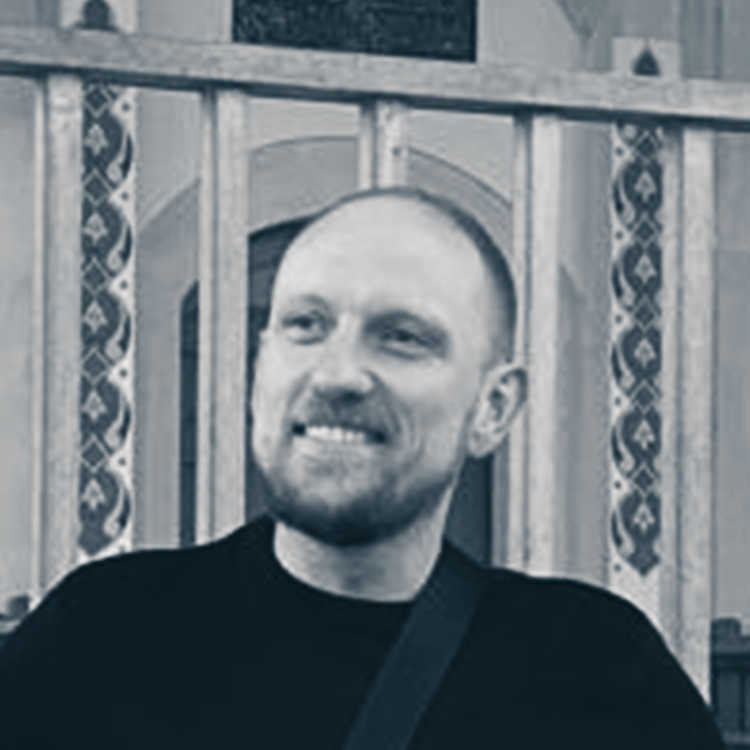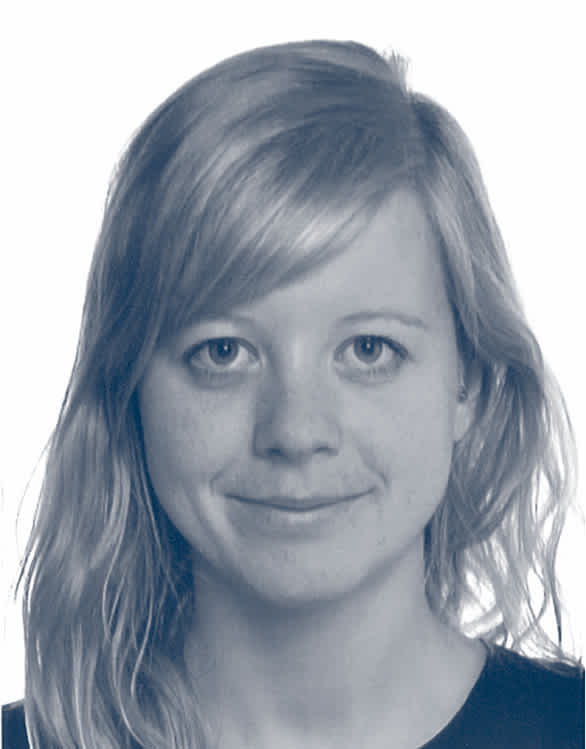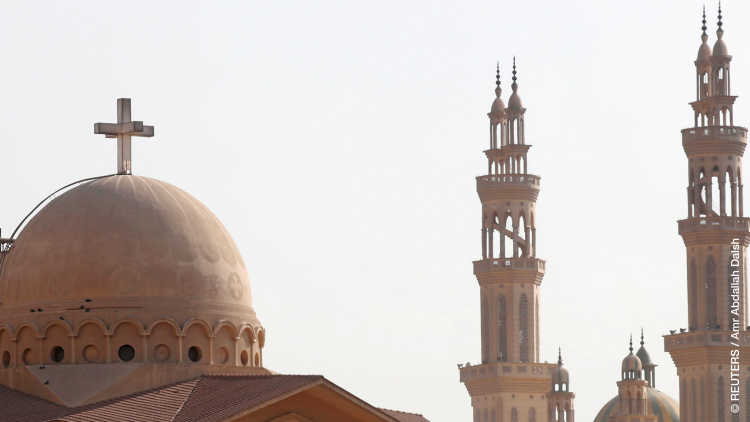- Startseite
- Publikationen
- GIGA Focus
- Mosque Geopolitics in Bosnia and Herzegovina
GIGA Focus Nahost
Mosque Geopolitics in Bosnia and Herzegovina
Nummer 3 | 2023 | ISSN: 1862-3611

In the age of globalisation, the foreign funding of mosques has become widespread in many countries worldwide. Bosnia and Herzegovina is no exception to the rule, and the post-war – and still ongoing – (re)construction process there has been accompanied by many foreign donations, in line with different forms of “mosque geopolitics” depending on the donor country.
As a great number of mosques were destroyed during the Bosnian war of 1992–1995, the post-war period has inevitably required a vital reconstruction process. New needs for places of worship, caused by the nationwide war-related displacement of Bosnian Muslims, have been met by the construction of new mosques.
In a relatively poor country like Bosnia and Herzegovina, the influx of foreign funds has been called for and welcomed by many Bosnian Muslim congregations. Western nations have lagged behind during this (re)construction process, while the task of helping financially with mosques has been taken over by several “friendly Islamic countries,” among them were most prominently Iran, Kuwait, Saudi Arabia, and Turkey.
But such foreign funding has not been via a top-down process, and in most cases the financial help coming from foreign donors only complements locally generated revenues invested in the (re)construction, restoration, and renovation of each Bosnian mosque.
While the short-term impact of this foreign funding is clear albeit not systematic architecturally, the religious one is much more modest.
Policy Implications
Behind mosque-building in Bosnia and Herzegovina lies crucial issues that Bosnian Muslims are trying to cope with as a nation, and it is not up to foreign actors or Islamic donors to address them. Dealing with war-related traumas alongside finding their place within the Balkans, Europe, and the global ummah are just some of the challenges Bosnian Muslims will face in the coming decades.
Bosnian Islam and Mosque-Building until 1995
Medieval Bosnia and Herzegovina was divided between several branches of Christianity, among which were Catholicism and Orthodoxy as well as a distinct so-called Bosnian Church. The advent of the Ottoman conquest, from the mid-fifteenth century onwards, introduced Islam to the region, and, by the end of the next century, a (relative) majority of the local Bosnian population had become Muslim. In the meantime, the Bosnian Church had disappeared, while sizeable minorities of Bosnian Orthodox and Catholics remained – not to forget also the consolidation of a small Bosnian Jewish community, hence giving local society a pronounced multireligious nature. Indeed, from its very inception, Bosnian Islam has been forged by the context in which it emerged, and mainly characterised by both a deep binding to Ottoman (now Turkish) Islam, representative of the Hanafi school (Madhhab) of Sunnism, and a wide set of local practices and syncretisms, both born out of the intrinsic permeability of Islam to other religions and cultures and of this multireligious Bosnian social environment.
By the mid-nineteenth century, the three main Bosnian religious affiliations (Muslim, Orthodox, Catholic), while having remained strictly confessional during most of the Ottoman period (1463–1878), had become closely entangled with then-emerging national identities – as in other parts of the Balkans. Hence, by the beginning of the twentieth century, both the Bosnian Serbs (Orthodox) and Bosnian Croats (Catholics) had achieved ethnoreligious synthesis, while it took a number of decades for Bosnian Muslims to do the same. Indeed, it was only within the Yugoslav Socialist Federation (1945–1992), of which Bosnia and Herzegovina was one of the six constitutive republics (alongside Croatia, Macedonia, Montenegro, Serbia, and Slovenia), and, under rather painful circumstances, during the war of 1992–1995, that a Bosnian Muslim identity would be consolidated and officially recognised. In that regard, a new ethnonym was adopted in 1993 for the Bosnian Muslims – from then on designated “Bosniaks.”
Hundreds of mosques were constructed in the country during the Ottoman period, and a local Bosnian Muslim clergy soon emerged – to be later consolidated and formalised during the Austro-Hungarian era (1878–1918), when the Islamic Community (Islamska zajednica, IZ) was founded in 1882 as the core institution overseeing Bosnian Muslim affairs and infrastructure. The links and cooperation between the IZ-linked Bosnian Muslim establishment, scholars, and their counterparts in the Islamic world are not a new phenomenon, and can be easily traced back to Ottoman times. They gained, however, new momentum in the 1960s and 1970s during the Yugoslav Socialist period, when cooperation and friendship between Yugoslavia and its (majority-Muslim) state partners of the Non-Aligned Movement (NAM) were in part enhanced and promoted by highlighting Yugoslavia’s Bosnian Muslim component. During the same era, several hundred mosques were either reconstructed or newly built. On the other hand, the foreign funding of Islamic infrastructure in Bosnia and Herzegovina, rather scarce before the 1990s, is solely a post-war phenomenon in terms of breadth and scale.
Indeed, the dramatic and widespread destruction of mosques that occurred during the Bosnian conflict – around 600 were completely destroyed, while several hundred more were damaged – has led to a simultaneous process whereby the restoration of existing and the construction of new mosques has played out since the end of the war in November 1995. Many actors have been involved herein, both local and foreign. The latter have, indeed, contributed financially to hundreds of projects all around the country.
In a fragmented, post-war context such as the Bosnian one, with a country now divided between three entities – the Bosnian-Croat Federation (Federacija Bosne i Hercegovine, FBiH), the Serb Republic (Republika Srpska, RS), and the District of Brčko (Distrikt Brčko) (see Figure 1 below) –, the foreign funding of mosques represents an additional variable, an extra layer to an already fragile balance in a highly sensitive context. Its impact is clear, but the forms, underlying motives, and scale remain to be accurately assessed.
Figure 1. Bosnia-Herzegovina after the War in 1995

Source: Author’s own compilation.
Foreign Funders of Mosque Reconstruction since 1995
A number of actors have been involved in the post-war (re)construction of Bosnian mosques, mainly originating from the Arabian Gulf, Turkey, and Southeast Asia. Most of them have been active throughout the past three (post-war) decades. However, it is possible to chronologically highlight various dynamics to the involvement of each in terms of degree and tempo.
Unsurprisingly, Saudi Arabia has been by far the main foreign investor regarding mosques in Bosnia and Herzegovina, implementing in the region its worldwide pan-Islamic, proselytising policy – notably through helping build such places of worship. Although institutional and diplomatic links already existed between Saudi Arabia and the IZ before the war, the involvement of the former noticeably increased in the region between 1992 and 1995 – opening up fertile ground for the local penetration of Saudi non-governmental organisations as well as of fundamentalist volunteers fighting alongside Bosnian Muslim forces. Through its main local humanitarian body, the Saudi High Commission for Relief of Bosnia and Herzegovina (Visoki Saudijski Komitet za pomoć Bosne i Hercegovine, VSK), created in 1992, Saudi Arabia has given hundreds of millions of USD in humanitarian assistance since, of which one part has been dedicated to mosque restoration and (re)construction. A few smaller Saudi NGOs have also helped financially on occasion, such as Igasa (International Islamic Relief), as well as individual donors from wealthy Saudi families. In many cases, though, these funds have been channelled in coordination with and/or under the supervision of the VSK.
Without a doubt, the events of 9/11 represented a tangible shift in the involvement of Saudi Arabia in Bosnia and Herzegovina, and marked the end of what Kerem Öktem labelled the “Wahhabi intermezzo” (Öktem 2010: 1) – namely, the strong presence of Saudi Arabia on Bosnian soil during the 1990s. Indeed, the post-9/11 international and United States-led crackdown during the first half of the first decade of the new century on Saudi-funded and/or Al-Qaida-linked militants, movements, and NGOs worldwide did not spare Bosnia and Herzegovina either. The VSK was accused of collusion with terrorist activities and networks, and therefore dissolved in 2001 under pressure from NATO and the US government. A number of former foreign mujahideens who had settled in the country were denied citizenship and/or expelled. Beside the VSK, several other Islamic, often rather Islamist, NGOs seeded in the country during the war were banned and/or dissolved. The IZ was rather receptive to this process, as it enabled it at the same time to counter the fundamentalist discourses and foreign predation threatening its institutional control over Bosnian Islam. At the same time, though, the IZ continued to welcome Saudi funding, as it desperately tried to oversee the reconstruction and resurrection of the country’s destroyed infrastructure and mosques.
Turkey has been the second main foreign investor in terms of mosques in Bosnia and Herzegovina, although it would take at least a decade after the war’s end for its influence in the region to fully blossom and spread. Indeed, the Turkish approach to the country – and the Balkans as a whole – would be marked by a tangible shift at the turn of the twenty-firstcentury. Turkey was initially relatively passive and cautious in the 1990s in its related foreign policy – even during the Bosnian war – as it then tried both to “break with the Ottoman past” (Gangloff 2001: 14) and to maintain its secularist and Westernised identity, as a way of keeping its ties with Europe (Gangloff 2001: 8, 14). Since the beginning of the new millennium, its involvement in Bosnia and Herzegovina has grown steadily, concomitant to the decrease of Saudi engagement. This for two main reasons: First, the achievement of Turkey’s “Turco-islamic synthesis” that began in the 1980s (Ross Solberg 2007: 436), bearing a revalorisation of the Ottoman past and promoting what could be labelled a “neo-Ottoman” policy. Second, the coming to power of Recep Tayyip Erdoğan’s Justice and Development Party (Adalet ve Kalkınma Partisi, AKP) in 2002, as associated, among other things, with expansionist ambitions abroad – especially in relation to the former Ottoman provinces (including Bosnia and Herzegovina), but even beyond indeed.
Since then, Turkey has been trying – notably in Bosnia and Herzegovina – to “fill the void in the field of religion and to prevent some Salafi and Wahhabi groups from gaining ground” (Özturk 2018: 8–9), acting as a religious supervisor, protector, and promoter of the Hanafi school of Sunni Islam – as opposed to the more rigorist Hanbalite one (Wahhabi) backed by Saudi Arabia – in host countries of the Balkans region (Özturk 2018: 10). One way of conducting this policy has been mosque-funding. Interestingly enough, as opposed to Saudi Arabia and other Gulf countries, not a single Turkish NGO is active in that field. Rather, the task has been fulfilled by official, state-led bodies. Among them most prominently are:
the Turkish International Cooperation and Development Agency (Türkiye İşbirliği ve Kalkınma İdaresi, TIKA), created in 1992 and linked to Turkey’s Foreign Affairs Ministry. Its initial purpose was to support Turkish foreign policy in the Balkans and Central Asia (Ross Solberg 2007: 436) via development projects. One aspect of this has been the restoration/renovation of Ottoman mosques, notably in Bosnia and Herzegovina (Öktem 2010: 29).
the Diyanet (Diyanet Türk İşleri Başkanlığı), or Turkish Presidency of Religious Affairs, created in 1924 under Mustafa Kemal Atatürk. Its revival as part of AKP foreign policy – to which it has become more or less subservient – since the turn of the new century (Özturk 2018: 6–7, 9) perfectly coincided with the beginning of its active involvement in Bosnia and Herzegovina. It acts as a kind of successor to the Ottoman Şeyh-ül-İslam (the supreme Islamic religious leader under the Ottoman Empire), establishing links and signing cooperation agreements with the local IZ and Direction of Waqf Properties (Vakufska direkcija, VD) (Öktem 2010: 31–32, 34). As in the case of TIKA, the Diyanet is not empowered to directly finance the construction of new mosques in Bosnia and Herzegovina; however, one way of overriding this prescription has been the twinning of Bosnian and Turkish towns, enabling long-term partnerships to arise – often taking the form of providing financial assistance in the construction of mosques (Öktem 2010: 34).
Figure 2. Mosques in the Town of Foča (Eastern Bosnia)

Source: Author’s own picture, taken in May 2021.
Note: The Mehmed-paša Kukavica mosque in the foreground remains in ruins. In the background we see the Careva (Imperial) mosque, which was reconstructed in 2017 with vital donations from TIKA.
Iran and Malaysia are other, less important foreign actors in terms of mosque-funding in Bosnia and Herzegovina. They have both been involved in a number of related projects since the second half of the 1990s. Iran is active through two main bodies present on Bosnian soil since the end of the last century:
the NGO BIRDS has promoted numerous mosque restoration and reconstruction projects, often as closely intertwined with the humanitarian assistance provided to Bosnian Muslims displaced during the war due to ethnic cleansing, endeavouring to resettle them in their former hometowns as “returnees” (povratnici).
the Center for Restoration and Humanitarian Help (Centar za obnovu i humanitarnu pomoć) attached to the Iranian Embassy, usually working in coordination with BIRDS.
As for Malaysian funds, they have been mostly channelled through the country’s Embassy. Malaysia has focused on the restoration and reconstruction of destroyed/damaged mosques rather than on overseeing new such buildings. Malaysia’s and Bosnia and Herzegovina’s partnership has long roots, given that the Southeast Asian country and Yugoslavia were both NAM members. Malaysia has been a favoured destination for Bosnian Muslim students since, and, besides mosque-funding, it has been also involved in humanitarian assistance and post-war rebuilding in the Balkans region – not to forget its sending of a battalion of Blue Helmets during the war itself.
One can mention more timely funding emanating from various other majority-Muslim countries, namely Indonesia, Jordan, and Egypt. All of them were mainly active in Sarajevo. However, this financing does not seem to have been part of concerted humanitarian programmes or geopolitical strategies – even if religious soft power might be among the motivating factors here.
Egypt has also helped with the restoration and especially the construction of a few mosques, notably in Sarajevo and Mostar, through the Egyptian Helping Committee (Egipatski komitet za pomoć) or the Egyptian Red Crescent (Egipatski Crveni polumjesec), as well as its Ministry of Waqf Properties. Indonesia and Jordan have basically limited themselves to building “their” state mosque in the capital Sarajevo, respectively in Otoka (Istiklalmosque, 1997–2001) and Grbavica (Jordanska, 1999–2002). These two mosques have their Malaysian, Kuwaiti, and Saudi counterparts in Sarajevo as well, in the form of the Malezijska mosque in Nova Breka (2001–2002), the Kuvajtska mosque of Čengić Vila (2003–2006), and the Kralja Fahda mosque of Alipašino Polje (1997–2000).
Since the middle of the first decade of the new century, actors coming from elsewhere in the Arabian Gulf have become more involved in mosque-funding in Bosnia and Herzegovina. Operating until then in the shadow of their Saudi, Turkish, or Iranian counterparts, they seem to have filled the vacuum left by those traditional actors’ gradual withdrawal. This is especially true since the turn of the 2010s, most likely due to waning interest in the Balkans region and for geopolitical and economic reasons, too. Examples are the post-9/11 targeting of suspicious Islamic organisations and funds, the Arab Spring of the 2010s and its consequences, as well as Turkey’s worsening economic crisis.
Qatar and the United Arab Emirates have also engaged on the ground through their respective NGOs: Qatar Charity (Katarska humanitarna organizacija) and the Qatari Red Crescent (Crveni Polumjesec) and Human Appeal International and the EAU Red Crescent (Crveni Polumjesec) – not to be mistaken with its Qatari and Egyptian counterparts. But it is Kuwait that seems to have taken the upper hand since the second half of the 2010s, as it has been collaborating on numerous mosque (re)construction projects in recent years. Interestingly enough, Kuwaiti funds have been channelled both through NGOs and state bodies – a combination of the Saudi and Turkish approaches when it comes to mosque-funding. Indeed, besides a few NGOs such as the Kuwaiti General Humanitarian Committee (Kuvajtski generalni komitet za pomoć) and the International Islamic Committee (Islamski svjetski komitet), one favourite partner of the Bosnian VD has been the Kuwait Ministry of Awqaf and Islamic Affairs – a kind of equivalent to the Turkish Diyanet.
Mapping the Foreign Funding of Mosque-Building
Establishing some of the geostrategic patterns to the foreign funding of mosque-building in Bosnia and Herzegovina remains possible, even without an exhaustive review hereof. Based on observations and conclusions drawn from my own data collection, certain tendencies emerge. The following discussion therefore tries to help sketch a “map of the foreign funding of mosques” in Bosnia and Herzegovina. As of 2022, I have been able to trace more than 400 mosque-building projects that have benefitted from foreign donations, to various degrees and in diverse amounts, out of approximately 2,000 projects of mosque (re)construction, restoration, or renovation since the end of the war in 1995. Interestingly, through the analysis of mosque-funding, the geopolitical interests of each foreign country seems to be reflected territorially and spatially in Bosnia and Herzegovina, as are also local ethnoreligious dynamics, politics, and demographics.
One can first notice that there seems to be a heterogeneous territorial repartition among the foreign funders. Indeed, to the countrywide mosque funding of Saudi Arabia, in accordance with its pan-Islamic views and global proselytising, have responded more localised forms of financing from Turkey or Iran. Indeed, Turkey has been somewhat focused on restoring and renovating the most prestigious Ottoman mosques, often situated in cities like Banja Luka, Čajniče, Foča, Mostar, Tešanj, Travnik, Rogatica, and, of course, the capital Sarajevo – its well-kept “field of operation.” However, it has also financed a number of new mosques built in a revisited, neo-Ottoman style.
Iran has been helping to rebuild more humble mosques, mainly in the Podrinje (eastern Bosnia) and Krajina (northwestern Bosnia) regions of the RS, or the southern Herzegovina region of the FBiH. Where the main actors are less active or present, other (smaller) countries seem to operate, and fill the gap: for instance, the UAE is particularly active in the villages of central Bosnia (Fojnica, Vareš, Vitez) and northeastern Bosnia (Olovo, Zavidovići), whereas Malaysia and Kuwait seem to share the same interests regarding northeastern Bosnia, further to those in the centre and southwest of the country too. Sarajevo and other important cities of the FBiH (such as Bugojno, Mostar, Tuzla, Zenica) remain, nonetheless, of great importance as well for these “smaller” donors, who have here helped financially with the construction of a number of mosques – most notably in their suburbs.
Other differences in the repartition of foreign funding intersect with the inter-entity boundaries of Bosnia and Herzegovina. Unsurprisingly, the Muslim congregations of the FBiH appear to receive much more foreign financing than their counterparts in the RS do. This may be for several reasons: First, numerically speaking, more Muslims live in the FBiH – owing to the consequences of ethnic cleansing during the war – than in nowadays RS areas (where Muslims used to be numerous, but are now in a position of minority, as many of them fled to the FBiH) such as the Krajina or the Podrinje. These are now largely Bosnian Serb-inhabited areas. In the latter, if some returnees have since come back to their pre-war homes, their numbers often represent just enough people to motivate the reconstruction of pre-war mosques – indeed often with some foreign help – but very rarely the building of new ones.
A second aspect relates to the numerous administrative hurdles returnees have faced in the RS, not to forget that the entire Muslim infrastructure and congregation (medžlisi and džemati) of the entity have been far more uprooted and devastated by the war than those of the FBiH. These factors have greatly contributed to slowing down or even putting off altogether foreign mosque-funding, despite being sorely needed in these regions. To be sure, even though more mosques were destroyed in the RS during the war, and therefore needed to be reconstructed, the demand for (new) places of worship has been more acute in the FBiH, where fewer mosques were destroyed (as most of these territories were under the control of the Bosnian Muslim-led Army of Bosnia and Herzegovina) – but also where, as mentioned earlier, more Muslims now live. Hence the “mushrooming” of mosques witnessed in many FBiH towns and municipalities, and the concomitant boom in foreign funding in these areas rather than in the RS.
Last but not least, pronounced rural–urban contrasts are to be noticed. Indeed, Bosnian towns rather than villages appear to be more favoured by foreign funding in terms of mosques. Towns are more often home to the most prestigious mosques, are the most developed areas of the country, and can potentially attract greater foreign investment and tourism. The spatial presence of mosques, and sometimes even foreign donors’ competition over them, seems to have increased in major towns. One such example can be found in Mostar, which – like Sarajevo, Tuzla, and Zenica – has been at the heart of related foreign investment. According to the available data, at least 10 of the 19 pre-war mosques of the town – all damaged or destroyed during the war – have been restored and rebuilt with foreign support from Saudi Arabia, Turkey, or other majority-Muslim countries. In a few instances, a number of countries have donated to the same project. In Sarajevo, the phenomenon is even more pronounced, as it was forbidden during the Yugoslav Socialist era to build mosques in the newly formed parts of the city. These neighbourhoods have since caught up in terms of mosque numbers; indeed, out of Sarajevo’s 40 mosques newly built after the war, around two-thirds are located in its newest neighbourhoods (Novi Grad and Novo Sarajevo).
Foreign Funding and Bosnian Mosques: Present and Future Perspectives
To summarise, one has to keep in mind the multilayered nature of mosque-funding in Bosnia and Herzegovina and its equally diverse implications. Indeed, mosque-funding is only one part of a wider array of foreign geopolitical, cultural, and economic interests in the country. Another important point is the exact nature and extent of the funding allocated to mosque-building. Very few mosques in Bosnia and Herzegovina are wholly foreign-funded. In most cases, financial help coming from foreign donors only complements the overall, locally raised revenues invested in the (re)construction, restoration, and renovation of a given mosque.
Beside mosques, Islamic education and its necessary infrastructure remain highly coveted domains among many of the foreign actors present in the Balkans region. Saudi Arabia, Turkey, and Iran, as well as the smaller donor countries, all try to promote their respective languages and religious doctrines through the financing and opening of cultural centres and Islamic educational facilities across the country – as often attached to newly built or reconstructed mosques. As the main proponent of the (Sunni) Hanbali religious school (Madhhab), Saudi Arabia has been trying to implement its strict views not only through the (re)construction of mosques but also with the distribution of radical publications and the opening of new Islamic centres, to undermine the Hanafi Madhhab adopted by local Bosnian (and Balkan) Muslims centuries ago, as inherited from the Ottoman Empire.
As mentioned earlier, the Bosnian conflict allowed Saudi NGOs to penetrate the whole Balkans region, hence giving it the opportunity to set foot in Europe and spread its influence and doctrine into the traditional, historic heart of European Islam. It has built major cultural and educational Islamic centres, most notably in Sarajevo (Kralja Fahda complex), Bugojno (Princeza Dževhera complex, in central Bosnia), and Mostar (Kralja Fahda center, in Herzegovina). Other similar institutions have been funded respectively by Turkey in Goražde (eastern Bosnia) and by Kuwait in Bužim (northwestern Bosnia) meanwhile (Akšamija 2010: 321; Hudović 2012: 310).
In the field of religious education and the sciences – as in the case of mosque-funding and –building – Turkey can play the card of its Ottoman past linking it to Bosnia and Herzegovina and indeed the whole Balkans area, as well as that of proximity in terms of practice, jurisprudence, and culture. Hence the greater receptivity to this policy seen among many Bosniaks still in search of a kin state and of references to a glorious past and history (Rucker-Chang 2014: 156). Since the end of the war, several Turkish universities, cultural centres, and language schools have been opened in the country, especially in Sarajevo (Rucker-Chang 2014: 155–156). Iran has been trying to promote Shiism primarily via related publications (notably through the Ibn Sina Research Institute of Sarajevo). It seems that its help and involvement are welcomed by the local population, especially since Iran has been a strong supporter of Bosnia and Herzegovina since the early days of the latter’s independence (Rucker-Chang 2014: 160). Relying on this, the Islamic Republic since then has enjoyed good relations with its Bosnian Muslim interlocutors and partners.
Apart from mosques, Kuwait and the UAE also support many construction projects for mektebi (religious primary schools). Although Qatar has been less active in mosque-funding than its Gulf counterparts, it has nonetheless been involved in major projects in the field of religious education. Examples are the reconstruction of the Faculty of Islamic Sciences of Sarajevo (Fakultet Islamskih Nauka) and the building of the medresa (Koranic school)of Cazin (northwestern Bosnia) and of the Islamic Academy of Zenica (central Bosnia).
Apart from in education, traditional tourism, and business, investment by other Muslim nations has been on the rise in further realms over the past two decades – especially with the development of Bosnia and Herzegovina as an emerging destination for “halal tourism” (respecting Islamic prescriptions in terms of accommodation, catering, and leisure) with growing numbers of visitors coming from the Gulf. This development has seen the construction of accommodation and leisure facilities (hotels, restaurants, malls, housing complexes, and similar). It has also led to foreign investment and business partnerships, with mosque-funding representing only one part of the equation here.
One thing remains certain, though: the foreign funding of mosques, even though extensive, only constitutes a fraction of the overall financial investment in mosque-building in Bosnia and Herzegovina and the wider Balkans. One has to remember that mosque-building in Bosnia and Herzegovina is a multilevel process that involves various actors, not only foreign, but also – and mostly – local ones. Indeed, most of the funds for mosque (re)construction are provided by the local Muslim faithful themselves through small donations and volunteer work, as well as via the important Bosnian Muslim diaspora living and working abroad – whose financial input is even more crucial than foreign funding. Many of these bottom-up donations are eventually complemented by financial support from state entities or municipal institutions, and, of course, from Bosnian Islam’s official bodies and congregations themselves (muftiluci, medžlisi,and džemati). The latter both spend a sizeable part of their respective budgets and incomes on the building and reparation of relevant infrastructure.
The presence of important flows of foreign funding coming from majority-Muslim countries is also to be linked to the equally important absence of such financing originating from Western countries. While the latter were – deservedly – energetic and invested in denouncing and condemning the terrible and widespread destruction of religious heritage in the country during the war, they have been largely inactive – to say the least – in terms of mosque reconstruction and restoration. This lack of involvement could be labelled a continuation of the policy of neutrality upheld by Western powers during the Bosnian conflict. This has been obvious in the case of the post-war reconstruction of places of worship, in which getting “too publicly” involved in a given project was likely to be perceived in the sensitive and fragmented Bosnian context as either favouring Muslims, Catholics, or Orthodox Christians. Doing so would have inevitably led to polemics, obstructions, or even unrest. Keeping the fragile peace of November 1995 at any price has been the overarching interest of the West, and, therefore its respective countries have been only involved in a very limited number of reconstruction and restoration projects, ones that mostly relate to non-religious monuments (bridges, museums, and the like) or, when it comes to mosques, to primarily protecting historical sites such as the Ferhadijamosque of Banja Luka or several ancient mosques of Mostar and Sarajevo. Further, this often is done in coordination with heritage-protection institutions and/or foreign Muslim donors. Interestingly enough, the very same policy has been applied regarding church (re)construction in the region, too. As the field of mosque (re)construction has hence long been deserted by Western countries as well as by international bodies and NGOs, it was almost natural that the gap would be filled by Muslim countries – often keen to get involved on a one-sided basis, namely on behalf of Bosnian Muslims.
Finally, it would be misleading to address the process of mosque (re)construction (solely) as a top-down enterprise in which local populations and congregations have been the “victims” of foreign predation via financial investment. If the disastrous (post-)war socio-economic situation has evidently favoured the entry of foreign actors and funding (not only in terms of mosque-building), one must also remember that these donations are rarely if ever “imposed” on local congregations and populations. In most cases, they result from solicitation by the local Islamic religious congregations and inhabitants themselves, which then lead to agreements, partnerships, and – in the vast majority of cases – projects’ joint funding (that is, foreign donations added to local revenues). Therefore, the key role played by IZ-related partners here should not be underestimated – most notably the Bosnian VD, which is the major interlocutor and recipient when it comes to mosque-funding in the country.
As of 2023, the process of mosque reconstruction and restoration in Bosnia and Herzegovina is about to be completed. The last three major Ottoman mosques that were destroyed during the war – the Arnaudija of Banja Luka, the Kizlaragina of Mrkonjić Grad (both located in northwestern Bosnia), and the Sinan-begova of Čajniče (in eastern Bosnia), all originally built in the sixteenth century – are set to be inaugurated hopefully this year, after their successful reconstruction. The few dozen destroyed mosques that remain untouched will probably never be rebuilt, however.
On the other hand, the construction of new mosques will most certainly continue – as will the foreign funding of them. It remains to be seen if these occurrences increase or stagnate, or, as is even more likely, if they follow new patterns and/or will be directed towards different types of building projects. The emergence, consolidation, or contrariwise withdrawal of certain donor countries is also a conceivable option, as has already been the case over the past three decades – a number of shifts and trends in mosques’ foreign funding have, as noted, been witnessed.
Ultimately, it is up to the IZ and the Bosniaks themselves to find their path forwards between local and globalist trends, since the mosque is primarily built for and shaped by worshippers themselves, not foreign donors. Local mosque architecture is only one of a number of pivotal issues that Bosniaks have been dealing with since 1995: namely, the war’s enduring consequences, internal divisions, regional and international positionings, as well as a multiplicity of identities (local, national, Balkan, European, Islamic). In Bosnia and Herzegovina, as elsewhere, finding the right balance (and compromise) between tradition, functionality, and modernity vis-à-vis the architecture of their places of worship is thus one of the key challenges facing Muslims in the twenty-first century.
Note
I have relied in part on my own personal mosque database, as compiled for the needs of my PhD thesis (still currently under writing).
Fußnoten
Literatur
Akšamija, Azra (2010), Contested Identities: Identity Politics and Contemporary Mosques in Bosnia and Herzegovina, in: Allievi Stefan (in cooperation with Ethnobarometer), Mosques in Europe – Why a Solution has become a Problem, Network of European Foundations Initiative on Religion and Democracry in Europe, Alliance Publishing Trust, 318–353.
Gangloff, Sylvie (2001), The Weight of Islam in the Turkish Foreign Policy in the Balkans, in: Turkish Review of Balkan Studies, 5, 91–102.
Hudović, Alma (2012), (Mis-)using Architecture for Determination of Religious Power in the case of Bosnia-Herzegovina, in: Duyan Efe (ed.), Theory for the Sake of the Theory (volume 1), reports of the ARCHTEO ’11 conference held in the Mimar Sinan Fine Arts University (Istanbul) in November 2011, 305–315.
Öktem, Kerem (2010), New Islamic Actors after the Wahhabi Intermezzo: Turkey’s Return to the Muslim Balkans, Oxford: European Studies Center.
Öztürk, Ahmet Erdi (2018), Transformation of the Turkish Diyanet both at Home and Abroad: Three Stages, in: European Journal of Turkish Studies (EJTS), 27.
Ross Solberg, Anne (2007), The Role of Turkish Islamic Networks in the Western Balkans, in: Südosteuropa – Journal for Politics and Society, 55, 4, 429–461.
Rucker-Chang, Sunnie (2014), The Turkish Connection: Neo-Ottoman Influence in Post-Dayton Bosnia, in: Journal of Muslim Minority Affairs, 34, 2, 152–164.
Redaktion GIGA Focus Nahost
Lektorat GIGA Focus Nahost
Regionalinstitute
Forschungsschwerpunkte
Wie man diesen Artikel zitiert
Cognée, Robin (2023), Mosque Geopolitics in Bosnia and Herzegovina, GIGA Focus Nahost, 3, Hamburg: German Institute for Global and Area Studies (GIGA), https://doi.org/10.57671/gfme-23032
Impressum
Der GIGA Focus ist eine Open-Access-Publikation. Sie kann kostenfrei im Internet gelesen und heruntergeladen werden unter www.giga-hamburg.de/de/publikationen/giga-focus und darf gemäß den Bedingungen der Creative-Commons-Lizenz Attribution-No Derivative Works 3.0 frei vervielfältigt, verbreitet und öffentlich zugänglich gemacht werden. Dies umfasst insbesondere: korrekte Angabe der Erstveröffentlichung als GIGA Focus, keine Bearbeitung oder Kürzung.
Das German Institute for Global and Area Studies (GIGA) – Leibniz-Institut für Globale und Regionale Studien in Hamburg gibt Focus-Reihen zu Afrika, Asien, Lateinamerika, Nahost und zu globalen Fragen heraus. Der GIGA Focus wird vom GIGA redaktionell gestaltet. Die vertretenen Auffassungen stellen die der Autorinnen und Autoren und nicht unbedingt die des Instituts dar. Die Verfassenden sind für den Inhalt ihrer Beiträge verantwortlich. Irrtümer und Auslassungen bleiben vorbehalten. Das GIGA und die Autorinnen und Autoren haften nicht für Richtigkeit und Vollständigkeit oder für Konsequenzen, die sich aus der Nutzung der bereitgestellten Informationen ergeben.















